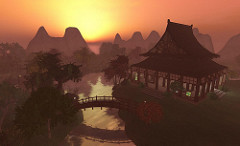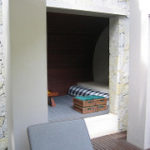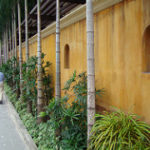Collecting Jade As Asian Art Material
Collecting Jade As Asian Artwork Materials
Jade is a single of the most-loved collectibles. Its origins are ancient, its properties each medicinal and decorative. However revered about the globe, jade is most frequently linked with China, in which it has been acknowledged for eight,000 many years. The early Chinese referred to as it yu and saw it as a residing stone, radiating with an inner glow.
Typically ground, mixed with wine and fed to the emperors, jade was believed to enhance imperial longevity. Symbolically, a court gentleman, on reaching 80, was allowed to carry a jade pigeon on a pole. Concubines acquired jade scepters from their emperors. Mandarin hats had carved small finials on their tops and a jade plume holder in the back. Chinese ladies decorated their hair with jade. Han dynasty princes and princesses had been occasionally buried in suits of jade, a notable feat accomplished by stitching together bits of jade with threads of silver or gold.
Close to the flip of the 20th century, we commence to see huge, fancy and colorful carvings created for Western consumption. Table-leading and decorative things developed amongst 1880 and 1900 had been usually embellished with silver or gold, even enamel. In the second half of the 20th century, traditional types started to give way to an elaborate new normal.
There are two types of jade: difficult and soft. Ancient jade and difficult jade are frequently referred to as jadeite. Although located in a variety of colors, the most valuable is green. The most beneficial green is a close to emerald green referred to as Imperial Jade or gem-jade. Other colors, such as yellow jade, have their place in the pantheon of Chinese carvings too. Soft jade is named nephrite. Its coloration ranges from somewhat off-white to yellowish white or greenish white. The latter is typically referred to as celadon jade.
When you see the word jade modified by an adjective this kind of as serpentine jade, mountain jade, new jade, watch out. These names are often provided to pseudo jades. The good quality of your assortment depends on knowing how to differentiate the genuine jades from the imposters. (You will locate an whole chapter on fake jades in my guide, Collecting Asian Art.)
Since jade is an ancient stone, it is ineffective to try to quantify it by date. Other criteria must be utilised, and a single way is to know the types that had been well-known during the diverse periods. New, machine- manufactured copies of older patterns differ from the originals in subtle techniques. The most prominent is that new carvings seldom have the same aesthetic connection to the stone as older ones.
To worth a jade carving, you should initial determine no matter whether it is present day or pre-Planet War II. If the jade you are viewing has a substantial sheen, you will do well to err on the side of caution.
The following step is to figure out if the raw material is in fact jade or a fake jade. Actual jade tends to really feel little bit colder than pseudo jade, so give it the touch test. Next, use a jewelers loupe to look for inclusions. There ought to not be any. Today, carvers operate around black spots and trapped crystalline formations, utilizing holes and other tricks to hide impurities.
Last but not least, establish if the stone has been dyed. Yet again, get out your loupe. If you see that the shade is located only in the fissures, you can safely say the stone has been artificially colored. If you do this and are nonetheless not confident, there are exams you can be completed at home or in a lab.
To begin your comparison of jade carvings, appear at the catalog for our approaching Global and Fine Arts Auction, or any of our previous sales. We often vet and feature collections of fine jade carvings.





















Leave a Reply